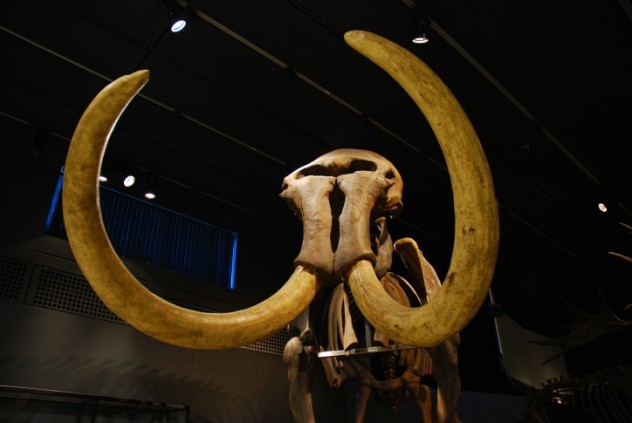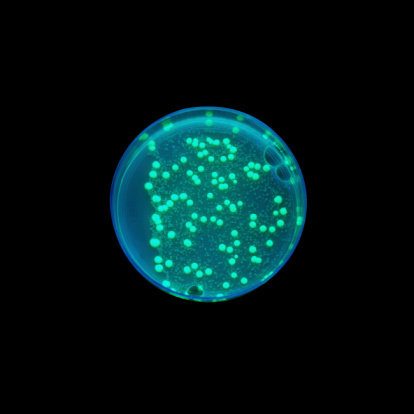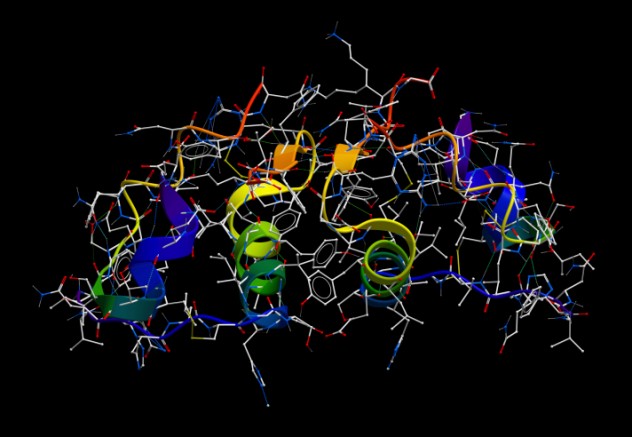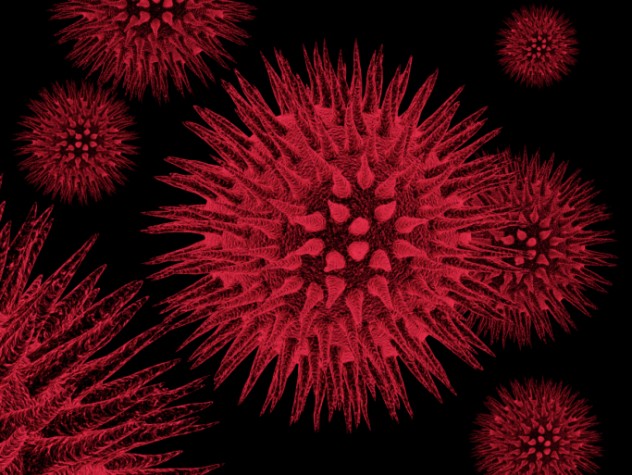 Weird Stuff
Weird Stuff  Weird Stuff
Weird Stuff  Animals
Animals 10 Inspiring Tales of Horses Being Human
 Mysteries
Mysteries Top 10 Haunting Facts About the Ghost Ship MV Alta
 History
History 10 Surprising Stories About the Texas Rangers
 Humans
Humans 10 Philosophers Who Were Driven Mad by Their Own Theories
 Miscellaneous
Miscellaneous 10 Video-Game-Worthy Weapons and Armors from History
 Weird Stuff
Weird Stuff 10 Psychics Who Accurately Predicted Wartime Events
 The Arts
The Arts 10 Pieces of Art Inspired by a Broken Heart
 Health
Health 10 Science Fiction-Sounding New Medical Treatments
 History
History 10 Surprising Facts About the Father of Submarine Warfare
 Weird Stuff
Weird Stuff 10 Times Real Laws Were Based on Bizarre Hypotheticals
 Animals
Animals 10 Inspiring Tales of Horses Being Human
 Mysteries
Mysteries Top 10 Haunting Facts About the Ghost Ship MV Alta
Who's Behind Listverse?

Jamie Frater
Head Editor
Jamie founded Listverse due to an insatiable desire to share fascinating, obscure, and bizarre facts. He has been a guest speaker on numerous national radio and television stations and is a five time published author.
More About Us History
History 10 Surprising Stories About the Texas Rangers
 Humans
Humans 10 Philosophers Who Were Driven Mad by Their Own Theories
 Miscellaneous
Miscellaneous 10 Video-Game-Worthy Weapons and Armors from History
 Weird Stuff
Weird Stuff 10 Psychics Who Accurately Predicted Wartime Events
 The Arts
The Arts 10 Pieces of Art Inspired by a Broken Heart
 Health
Health 10 Science Fiction-Sounding New Medical Treatments
 History
History 10 Surprising Facts About the Father of Submarine Warfare
10 Groundbreaking Firsts In Biology
It’s easy to forget that ideas which feel obvious to us today, with centuries of collective hindsight to call on, usually didn’t start out that way. The fact that we take some things for granted is probably part of why their origin stories are so interesting. We’ve already covered examples from law, medicine, and astronomy. Now it’s biology’s turn.
10The Realization That Animals Can Become Extinct

If you were walking along the beach and found a fossil, you’d naturally assume it came from some long-extinct species. The idea that species die out is so normal to us that it’s hard to imagine a time when people thought every single type of creature was still alive somewhere. Yet people believed God had created everything—why would He create something that wasn’t fit to live?
Georges Cuvier was the first person to question this. In 1796, he wrote a paper on elephants, in which he described the African and Asian variations. He also mentioned a third type of elephant, known to science only by its bones. Cuvier noted key differences in the shape of this third elephant’s jaw, and suggested it was a different species entirely. He called it the mastodon, but where were the living specimens?
According to Curvier: “All of these facts, consistent among themselves, and not opposed by any report, seem to me to prove the existence of a world previous to ours, destroyed by some kind of catastrophe.” He didn’t stop with just this revolutionary idea. Curvier did research into ancient vertebrate fossils—coining the name Pterodactyl in the process—and figured out that reptiles had once been the dominant species.
9The First Cells Grown Outside Of The Body

If a biologist wishes to do research on the inner workings of animal cells, it’s a lot easier if those cells aren’t part of the animal at the time. Nowadays, biologists culture a vast swathe of cells in vitro, with manifold benefits to our understanding of life. The very first person to try and keep cells alive outside of a host was Wilhelm Roux, a German zoologist. In 1885, he put part of a chicken embryo in a saline solution and kept it alive for a few days.
Research continued for a couple of decades with scientists keeping tissue alive, but it wasn’t until 1907 that anyone managed to grow new cells in solution. Ross Harrison took tissue from frog embryos and was able to get them to produce new nerve fibers, which he then managed to keep alive for a month. Now, cell lines can actually be kept alive indefinitely—scientists are still doing experiments on lines from a woman who’s been dead for over 50 years.
8The Discovery Of Homeostasis

You probably learnt about homeostasis in school, but it’s easy to forget just how important it is. Homeostasis is one of the four unifying principles of modern biology, along with evolution, genetics, and cell theory. The basic idea can be encapsulated in a short phrase: organisms regulate their internal environment. But like a lot of other ideas that can be summed up briefly—objects with mass attract each other, the Earth orbits the Sun, there is no spoon—it’s actually quite a profound insight into the nature of our world.
The man who came up with the idea was Claude Bernard, a prolific scientist of the mid-19th century, who rivaled Louis Pasteur for fame (indeed, the two were friends). Bernard made great strides in understanding physiology, though his fondness for vivisection destroyed his first marriage and his wife went on to campaign against his work. Yet homeostasis—which he called milieu intérieur—didn’t have its true importance recognized until decades after Bernard’s death.
In an 1887 lecture, Bernard explained his theory: “The living body, though it has need of the surrounding environment, is nevertheless relatively independent of it. This independence which the organism has of its external environment, derives from the fact that in the living being, the tissues are in fact withdrawn from direct external influences and are protected by a veritable internal environment which is constituted, in particular, by the fluids circulating in the body.”
A scientist ahead of their time often goes completely unrecognized, but Bernard’s other work was enough to cement his reputation. Nevertheless, it took 50 years for science to catch up to the point it could test, confirm, and appreciate his most important idea. His 1911 entry in Encyclopedia Britannica didn’t mention homeostasis at all. Sixty years later, the same publication called it his “most seminal contribution.”
7The First Isolation Of An Enzyme

No doubt you learnt about enzymes at school, but in case you’re a bit rusty, they’re big proteins that help chemical reactions. Among other things, they help make really effective washing powder. They also enable tens of thousands of chemical reactions in living organisms (many of which could lead to the stains that make the washing powder so necessary). Enzymes are as important to life as DNA—our genetic material can’t copy itself without them.
The first enzyme discovered was amylase, also called diastase, which you have in your mouth right now. It breaks down starch into sugar and was discovered by French industrial chemist Anselme Payen in 1833. He concentrated the enzyme but the mixture was impure. For a long time many biologists believed extracting a pure enzyme might be impossible.
It took almost 100 years for American chemist James Batcheller Sumner to prove them wrong. At the start of the 1920s, Sumner set his sights on isolating an enzyme. His goal was so audacious it actually lost him a scholarship with one of the leading experts in the field, who thought the plan was ridiculous. Sumner pushed on anyway, and in 1926 isolated urease, an enzyme that breaks down urea into its chemical components. Some of his peers doubted his results for years, but were eventually forced to concede. Sumner’s work earned him the Nobel Prize in 1946.
6The Suggestion That All Life Has A Common Ancestor

Who was the first person to suggest that all life evolved from a single creature? A bunch of you would probably answer “Charles Darwin.” It is true that Darwin expressed this idea—one of the most quotable lines in On the Origin of Species is: “There is grandeur in this view of life, with its several powers, having been originally breathed into a few forms or into one.” However, while far be it from us to downplay Darwin’s achievements, the idea of a common ancestor was actually first expressed decades earlier.
In 1740, the man with the most French name in history, Pierre Louis Moreau de Maupertuis, suggested that “blind destiny” may have produced a wide variety of individuals, of which only the most capable survived. In 1790, Immanuel Kant pointed out that this could imply an original parent of life. Five years later, Erasmus Darwin wrote: “Would it be too bold to imagine, that all warm-blooded animals have arisen from one living filament?” His grandson Charles decided it wouldn’t be too bold at all.
5The Invention Of Staining

If you’ve ever seen pictures of cells taken through a microscope (or looked at them through a microscope yourself), there’s a good chance they were stained first. Staining allows us to see parts of the cells that aren’t normally visible, and to see the visible stuff more clearly. There are a bunch of different staining methods available and it’s one of the most fundamental techniques in microbiology.
The first person to stain a sample for examination under a microscope was Jan Swammerdam, a Dutch naturalist. Swammerdam is most famous for discovering red blood cells, but he spent his career looking at basically everything under a microscope. In the 1680s, he wrote of using “coloured liqueurs” on dissected worms, “the better to distinguish their internal parts, which are all of the same colour.”
Unfortunately for Swammerdam, that text wasn’t published for another 50 years, by which point he was already dead. In the meantime, his countryman and fellow naturalist Antonie van Leeuwenhoek had independently come up with the idea. In 1719, Leeuwenhoek used saffron to stain muscle fibers for examination and is usually considered the father of the technique. Since both men came up with the idea, and both ended with a reputation as microscopy pioneers, there’s probably nothing to feel bad about either way.
4The Development Of Cell Theory

“Every living creature is made of cells,” is a phrase that will probably get you less disagreement than “the Earth is not flat.” Cell theory is largely taken for granted, but the idea didn’t actually show up until the 19th century, 150 years after Robert Hooke first viewed cells through a microscope. In 1824, Henri Durochet wrote of the cell: “It is clear that it constitutes the basic unit of the organized state; indeed, everything is ultimately derived from the cell”—though he wrote it in French.
Aside from cells being the basic unit of life, cell theory also contains the idea that new cells form when another cell splits in two. Dutrochet missed this part (he believed new cells formed inside their parent). The initial realization that cells halve to reproduce belongs to another Frenchman, Barthelemy Dumortier, but there are a dozen other people who made contributions. Sometimes a theory can be pinned down to an individual—Newton, Galileo, Darwin, and Einstein spring to mind—but cell theory can’t. It came about because a lot of people made small steps towards progress, in much the same way modern science works.
3Sequencing DNA

Until his very recent death, British scientist Frederick Sanger had the unique distinction of being the only living person to have won two Nobel Prizes. It’s the work behind his second award that has earned him a place on this list (which is only slightly less of an honor). His 1980 Nobel Prize was shared with Walter Gilbert, an American biochemist. In 1977, they had both published a method for figuring out the sequence of the building blocks in a strand of DNA.
The significance of this breakthrough is reflected in how swiftly the Nobel committee rewarded the scientists. Ultimately, Sanger’s method proved cheaper and easier and became the standard for a quarter of a century. The columns of unevenly spaced lanes Sanger’s method produces are instantly recognizable as DNA tests. In inventing the technique, Sanger paved the way for revolutions in criminal justice, evolutionary biology, medicine, and more.
2The Discovery Of Viruses

In the 1860s, Louis Pasteur became famous for his germ theory of disease. The germs of Pasteur were only half the story, however. The early proponents of germ theory thought infectious diseases were all caused by bacteria. But the common cold, flu, HIV, and countless other conditions are caused by something else entirely—viruses.
Martinus Beijerinck is the man who first realized bacteria weren’t the whole story. In 1898, he took sap from tobacco plants infected with a condition known as mosaic disease. He passed the sap through a mesh so fine it could filter out all bacteria. When Beijerinck rubbed the filtered liquid on healthy plants, they still got sick. He repeated the experiment and found no loss in contagion. He concluded that something else, perhaps a liquid, was the problem. He called it contagium vivum fluidum, or soluble living germ.
Beijerinck also took an old English word, virus, and gave it to his mysterious agent. The discovery that viruses weren’t a liquid fell to an American named Wendell Stanley. It took a while—Stanley wasn’t even born until 1904, six years after Beijerinck’s discovery. For his work on viruses Stanley was one of the recipients of the 1946 Nobel Prize in Chemistry, which you may recall was shared with James Sumner for his work on enzymes.
1The Rejection Of Preformationism

One of history’s most unusual ideas was preformationism, at one point a leading theory about the creation of babies. As its name implies, the theory held that all creatures were preformed—that is, their shape was already complete before they began to grow. In simple terms, people believed that a miniature human body existed inside either the sperm or the egg, waiting to find a place where it could expand. This tiny person was called a homunculus.
One of the key proponents of preformationism was Jan Swammerdam, the inventor of staining techniques from earlier. The idea was popular for over 100 years in the early days of science, from the mid-17th century right up until the end of the 18th.
The alternative to preformationism is epigenesis, the idea that life emerges through a series of processes. The first person to put this theory forward, against the background acceptance of preformationism, was Caspar Friedrich Wolff. He wrote a paper in 1759 describing embryonic development as beginning with a with a layer of cells. His work was controversial at the time, but improving microscope technology made the acceptance of his ideas inevitable. By the time the 19th century rolled in, Preformationism was all but dead.
Alan is a full-time writer who you can pester on Twitter, email or read his blog (which he promises to update more often) at skepticalnumber.com.
